Welcome to Old School Month on Eternal Central. We’re looking at a different Old School 93-94 deck each day of the month. Today’s deck is Naya (Budget) Land’s Edge Combo, utilizing the combination of Land Tax and Land’s Edge for a combo kill, in a Red-White-Green (Naya) color scheme. This is a budget build, with no Power 9, but still utilizes Chaos Orb and a few dual lands.
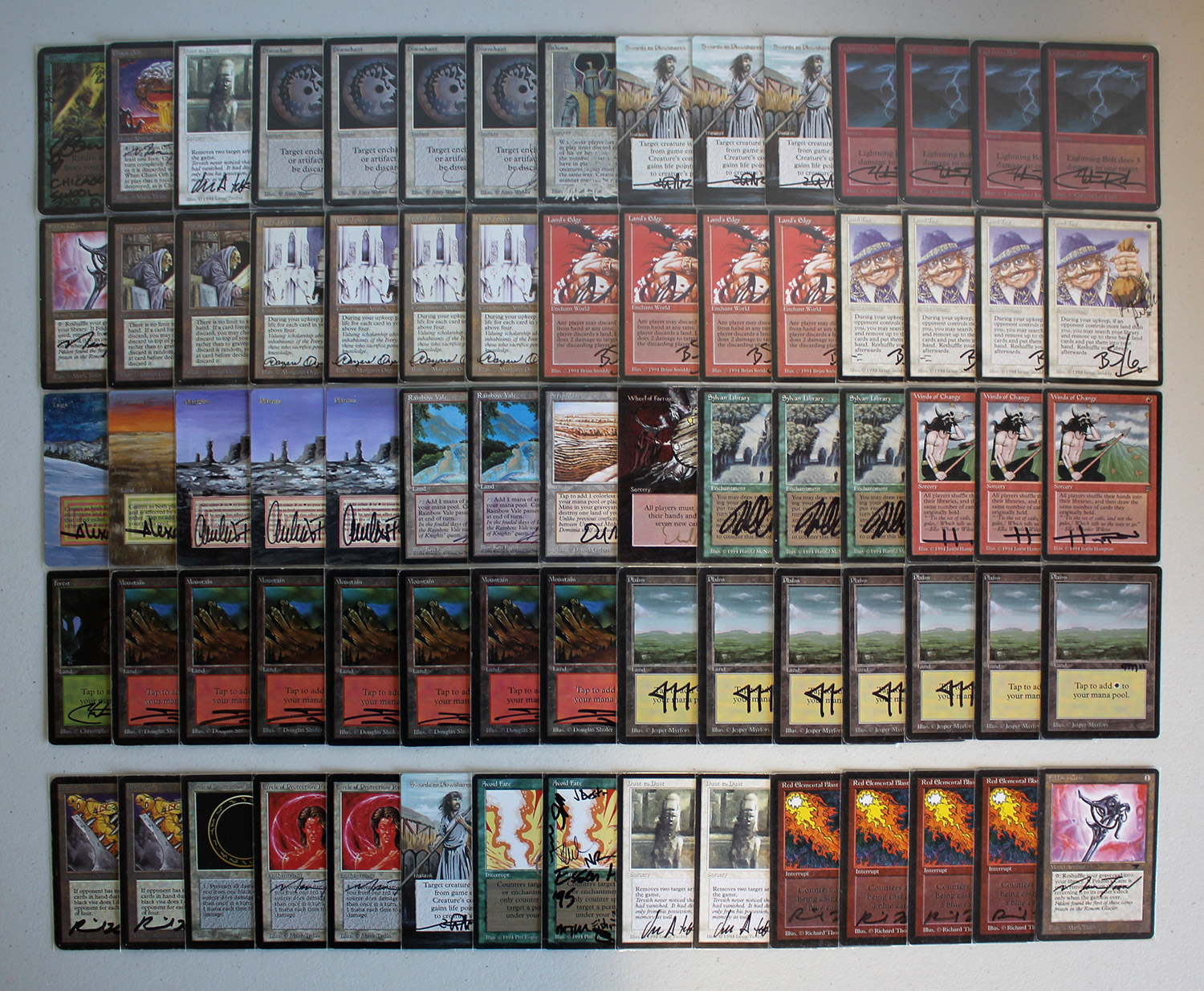
Constructing Naya Land’s Edge Combo
There are plenty of ways to construct a Land’s Edge combo deck, and we’ve previously looked at a fully powered (non-budget) Red-White build more in depth in another article, which is a more grindy version that also acts as a pseudo-control deck.
The version we’ll be looking at here is more of a straightforward combo build, and strips away most of the non-essential combo pieces, with the exception of White and Red’s best spot removal. It splashes Green simply for Sylvan Library and Regrowth.
Creature Choices
Essentially a linear combo deck, this is a creatureless deck, ensuring that the opponent’s main deck creature removal spells are dead draws (at least in Game 1, before they have the opportunity to sideboard them out). Some people like playing an aggro-combo approach, with Savannah Lions, White Knight, and so on to have a quick clock, but in this version we’ll forego all of that and just try to stick to synergistic combo pieces and spot removal.
Kill Conditions
The namesake card of the deck, Land’s Edge is a unique Enchant World from Legends that allows either player to discard a land from hand at any time to deal 2 damage to target player.
Some amount of burn spells are valuable in this version, in order to stave off early creatures hordes, or to finish the opponent off in conjunction with Land’s Edge. It’s rare that you will not win with Land’s Edge, but you can construct this deck with more burn in it if you wish (such as Chain Lightning, Earthquake, etc.). The goal is to never draw too many dead cards in Game 1 against any strategy, before you can tune the deck after sideboarding.
Feldon’s Cane is useful as both a sideboard and main deck card, in order to cycle through your discarded or destroyed threats and basic lands (that you’ve discarded to Land’s Edge), and I have won very protracted games against hard control decks by decking them, simply because of the presence of a resolved Feldon’s Cane. I like one of these main, and another sideboarded, for use against both combo decks and very grindy control strategies.
Draw Engines
Howling Mine is fairly common among Tax-Edge strategies, but in this version they have been replaced by Sylvan Library and Winds of Change. Either of those provide ample card selection, while Land Tax usually provides ample card advantage throughout the course of the game. Using Land Tax in conjunction with Sylvan Library also provides even more selection by virtue of potentially shuffling the deck each turn.
Wheel of Fortune can be a double-edged sword, but is very useful in this deck. It can find those last points of damage when necessary, or dig in to more combo pieces after all other options have been exhausted, or if your hand has been depleted by discard spells.
Removal
This is not the fastest combo deck, so some amount of one for one spot removal is fine. Chaos Orb, Disenchant, Lightning Bolt, and Swords to Plowshares are the standard bearers. You can supplement this with more metagame-dependent removal if you wish, such as Chain Lightning, Earthquake, Divine Offering, Dust to Dust, Wrath of God, and more. In this version we’ve steered away from basically anything in the 75 that’s more than 3 mana, because when operating on a budget and without any Moxen, it’s better to skew mana costs lower, in order to more reliably activate Land Tax.
Balance is an MVP candidate for this deck, as you can frequently use your other spells to adjust your cards in hand, lands on board, and so forth.
Constructing a Mana Base
On-color Moxen are certainly welcome should you already have them, or work towards acquiring them. I like just a handful of dual lands in here, in order to reliably cast your key spells, but other than that you can mostly stick to basic lands.
Rainbow Vale is an oft-overlooked gem from Fallen Empires that can not only provide any color mana you need, but can also help to get you in a reliable position to activate Land Tax. I like 2-3 copies in 2-3 color versions of Tax-Edge Combo.
I also like 1-2 Strip Mines in Tax-Edge as a necessary answer to Library of Alexandria, and also to help manipulate the calculus for Land Tax. In a pinch you can Strip your own land to get well underneath the opponent, and then trigger Land Tax during your upkeep.
Designing the Sideboard
There’s already a good amount of spot removal main deck, but you can always add more to the sideboard as you desire for your local metagame.
Red Elemental Blast is necessary for counter skirmishes, and to force through a key threat or game-breaking spell. It also has the virtue of being a nice answer against Serendib Efreet decks, which can present a quick clock that you need to answer in order to set up your own win conditions.
Avoid Fate is a narrow answer to opposing removal spells, which you’ll mainly use to protect against Disenchant from decks that absolutely rely on resolving it to stay in the game.
Circle of Protection: Red and Circle of Protection: Black are both efficient and useful answers to things like burn decks and Underworld Dreams combo decks, respectively. Greater Realm of Preservation is another consideration that addresses both, but requires a much more significant mana investment for each activation, so I usually skip it in these unpowered builds.
City in a Bottle is a great card against Arabian-aggro type decks, but is costly in terms of real world money. If you have them or can borrow them, a couple of copies go a long way, and are very easy to cast.
Black Vise is a tool that is usually best against opposing decks that will have tons of cards in hand, such as those utilizing Howling Mine or their own Ivory Towers.
Blood Moon is an interesting card in this version, because it can shut off entire decks from casting their spells. Given that it’s 3 mana, I don’t really like it in this version though, as your mana is often better spent elsewhere establishing or protecting the combo.
Playing Naya Land’s Edge Combo
This deck is reliant on activating Land Tax. You will often mulligan aggressively for it and/or a draw spell. Its synergy with the rest of the deck is what makes it so important, and can help you easily overcome mulligans, and parallels Life from the Loam in Modern and Legacy formats in this regard.
Nearly everything in the deck is meant to keep you alive, or to be used in conjunction with some other card(s) to provide synergies that will overcome the opponent in the mid to long game. Ivory Tower can help put your life total out of reach from fast and aggressive strategies (or those reliant on burn spells), while Sylvan Library and Winds of Change can quickly help you piece together your combo pieces.
Library of Leng is unique in that it allows you to hold on to more than 7 cards, which in turn makes your Ivory Towers and Winds of Change much stronger. It also provides the benefit of allowing you to put cards on top of your library in any order, should the opponent make you discard them by any means.
Ten Opening Hands with Naya Land’s Edge Combo
Here are ten randomly drawn opening hands with the deck (in order, and not manipulated in any way), and a few brief words with how I might look to play said opening hands.
Opening Hand 1
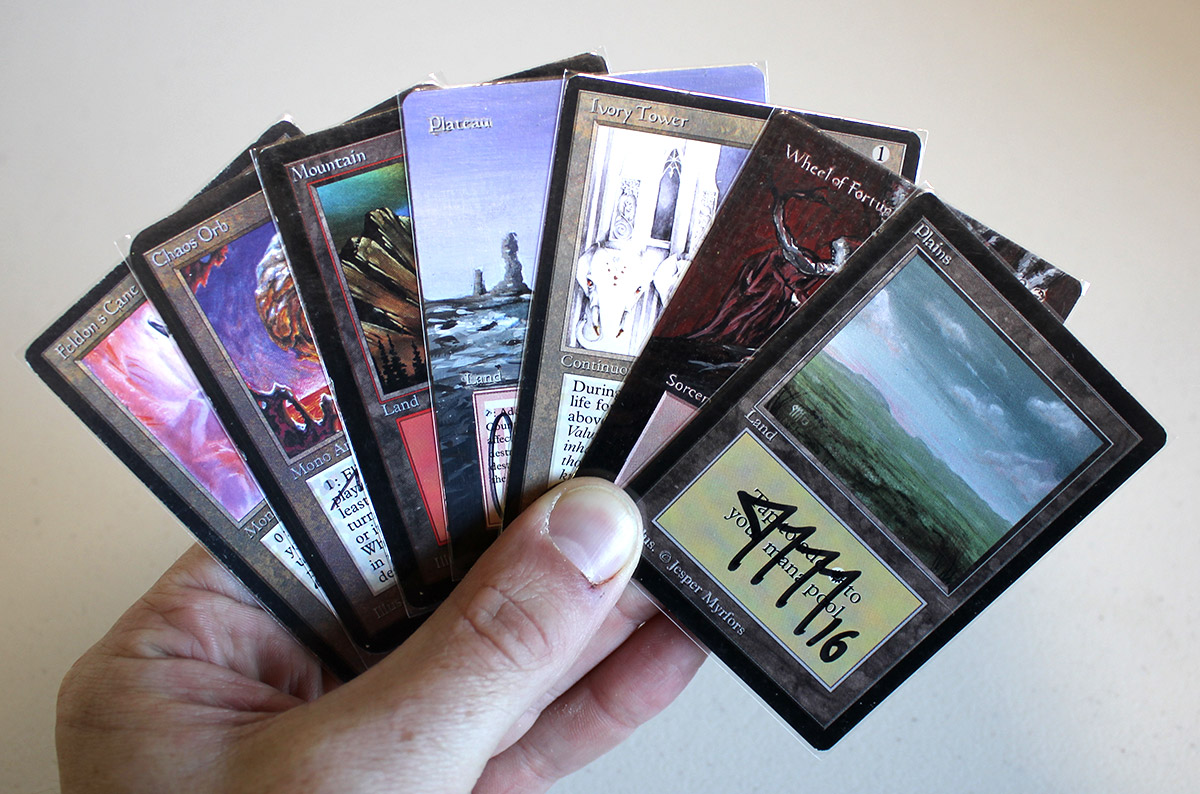
While lacking Land Tax itself, this hand has Ivory Tower, mana, a piece of removal, and Wheel of Fortune to quickly reload and dig for more gas. I’d keep this hand, and lead with Mountain in to Ivory Tower, and try to quickly play out the hand and cast Wheel.
Opening Hand 2
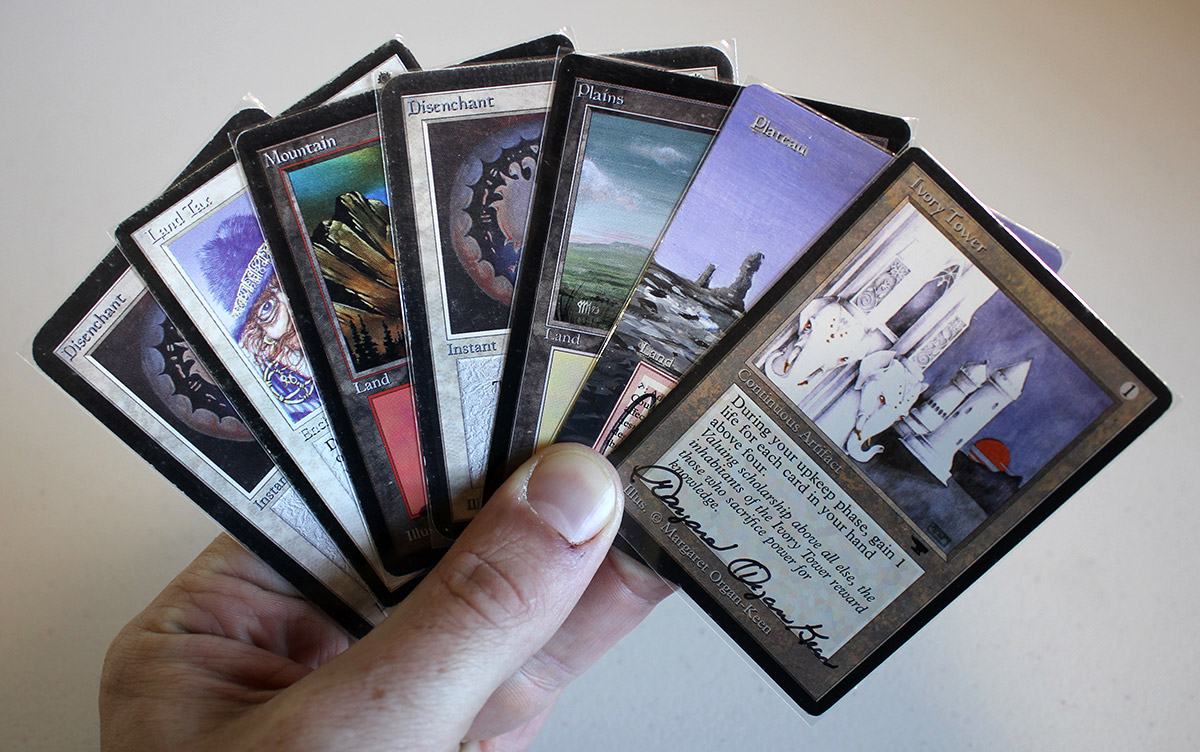
Plenty of on-color mana, Land Tax, Ivory Tower, and a pair of Disenchants make this an easy keep. This can keep pace with an early creature with Ivory Tower, or can handle an early Sylvan or Jayemdae Tome from the opponent with Disenchant, while using Land Tax to get ahead on cards.
Opening Hand 3
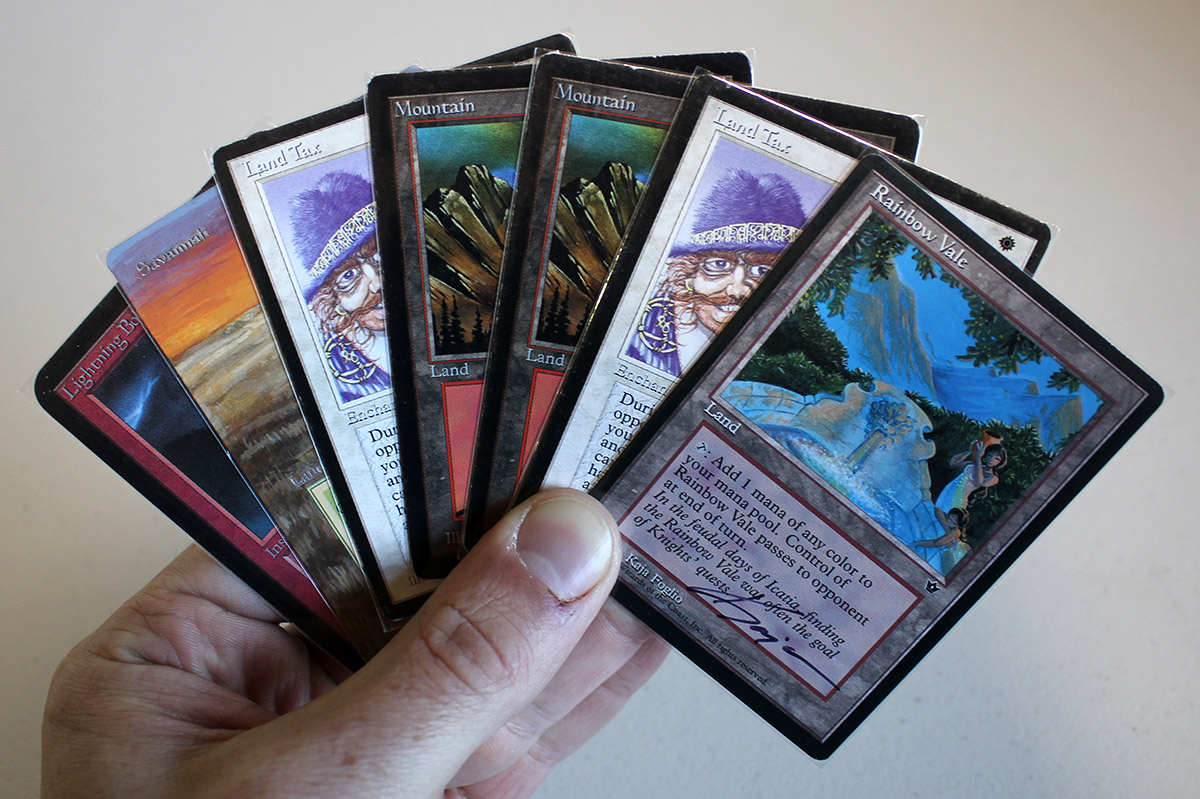
Mana, Land Tax, and removal – rinse and repeat. This is a fine hand that has a backup Land Tax, as well as Rainbow Vale to help quickly trigger the Tax if the opponent doesn’t already play through it.
Opening Hand 4
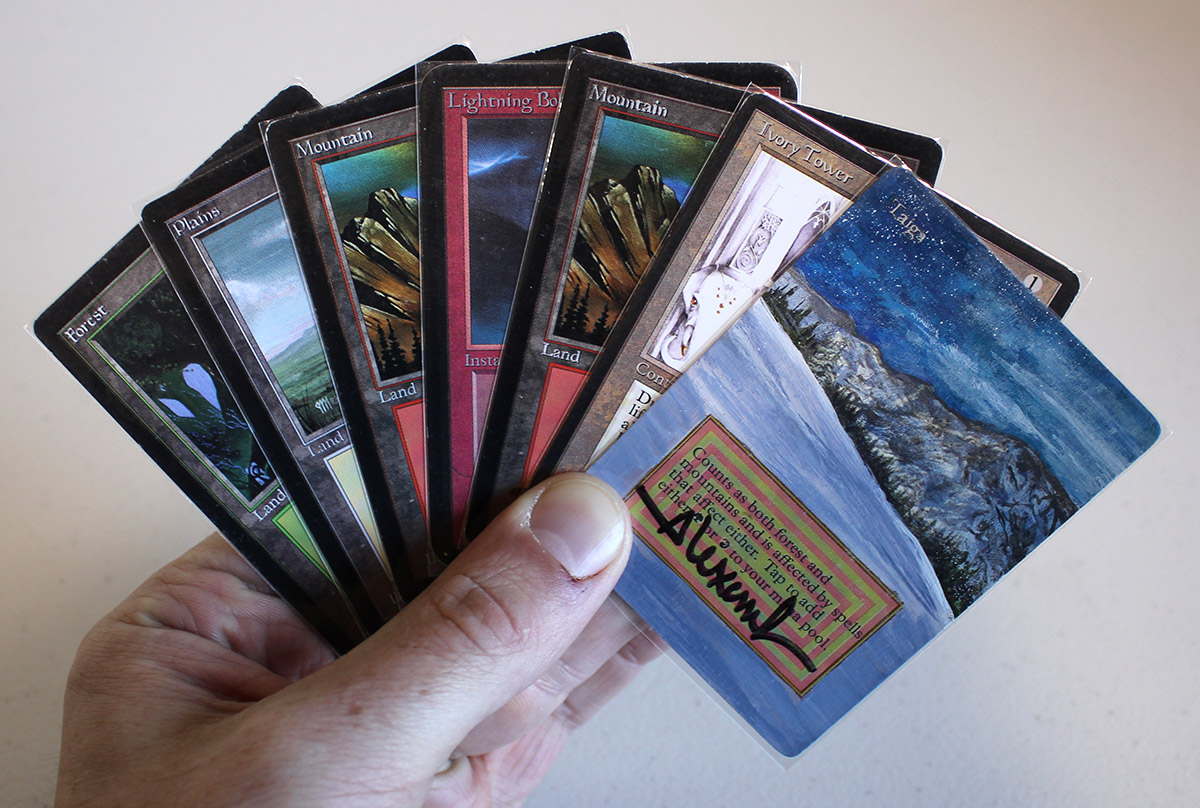
With a variety of mana, but nothing to really do with it, and no way to dig, this hand is a mulligan. If you suspect you’re playing a faster Zoo deck you might be able to talk yourself in to this on the draw, but I’m throwing it back for a new hand.
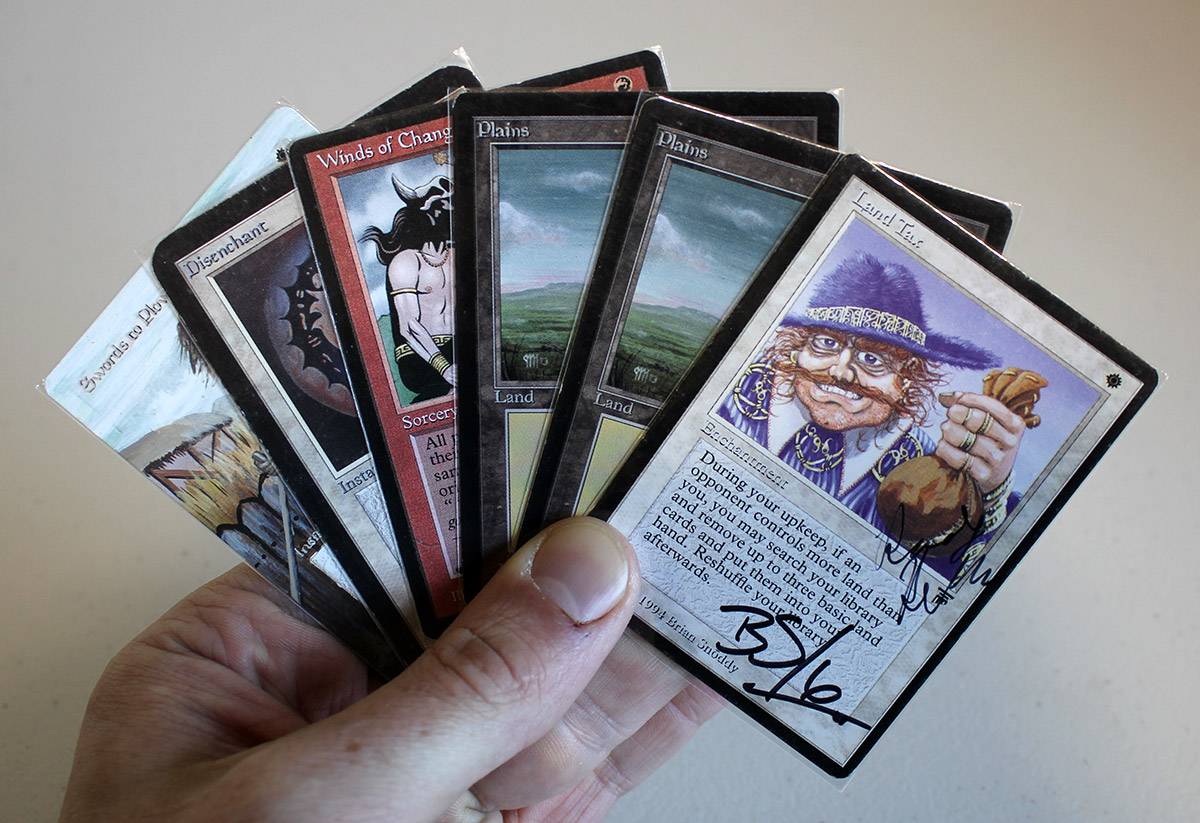
Mana, Land Tax, and removal make this keepable. With the pregame scry I’d be looking for Sylvan Library, Ivory Tower, Library of Leng, Land’s Edge, or a backup Land Tax.
Opening Hand 5
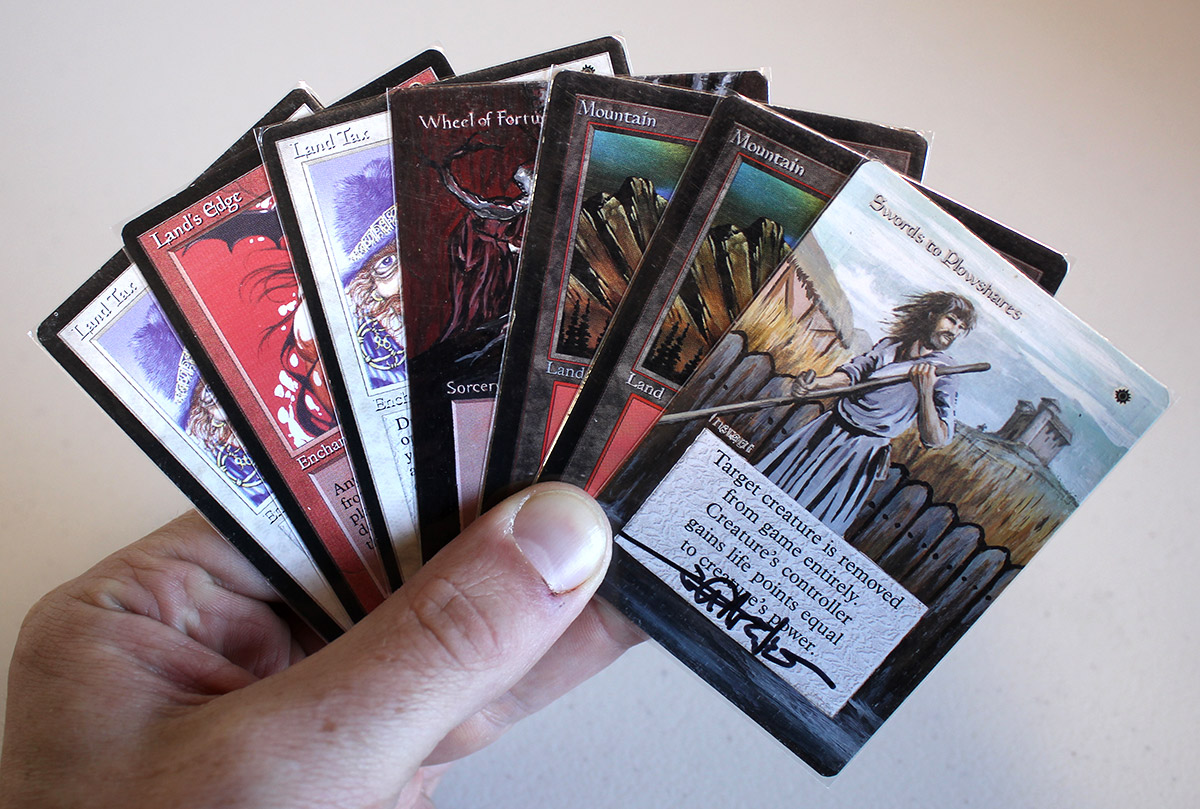
This hand lacks White mana, but is full of combo cards, a draw spell, and a piece of cheap removal. I’m going to risk keeping it, because the payoff is so high if we can find any white mana source in the early part of the game.
Opening Hand 6
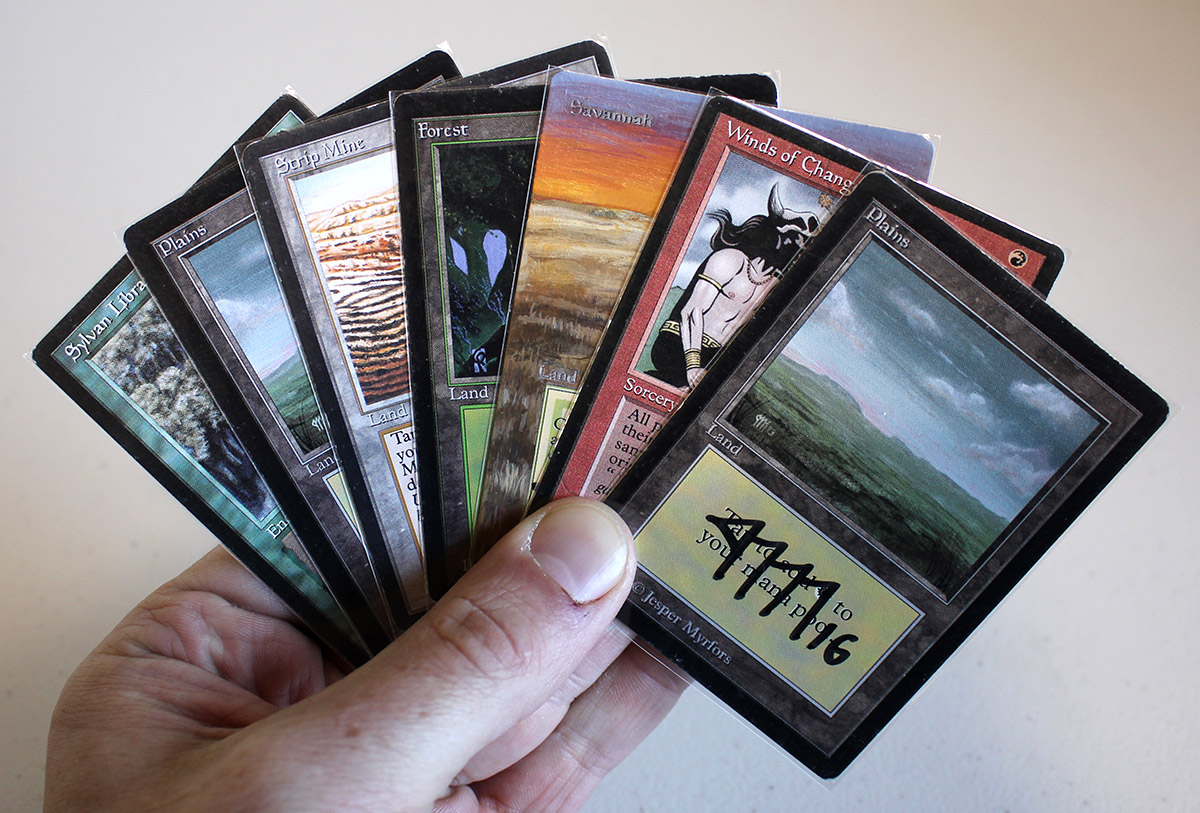
Without any combo cards, this is a pretty weak opener. It does have good mana though, as well as Strip Mine, Sylvan Library, and Winds of Change. Two draw and digging mechanisms is why I’ll reluctantly keep this opener.
Opening Hand 7
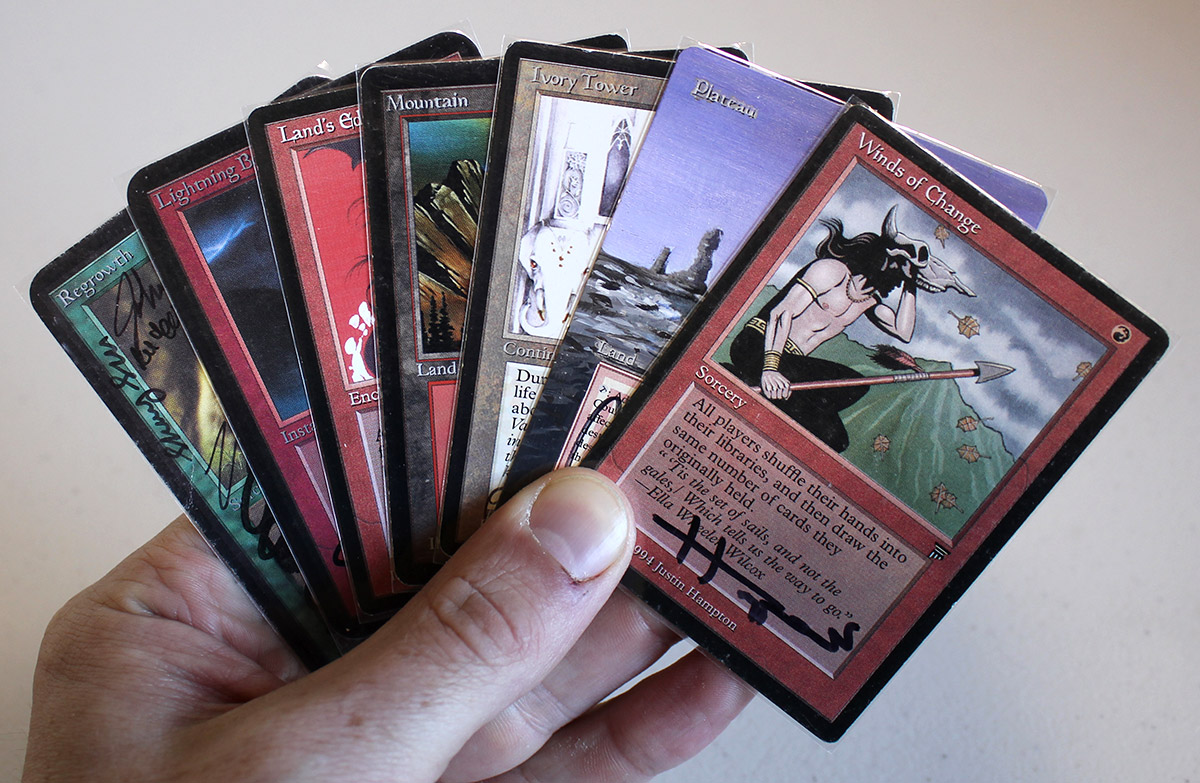
This hand has mana, Ivory Tower, half of the combo in Land’s Edge, a piece of removal, and a Winds of Change to dig for more gas down the road. I’d hesitantly keep this opener against an unknown opponent.
Opening Hand 8
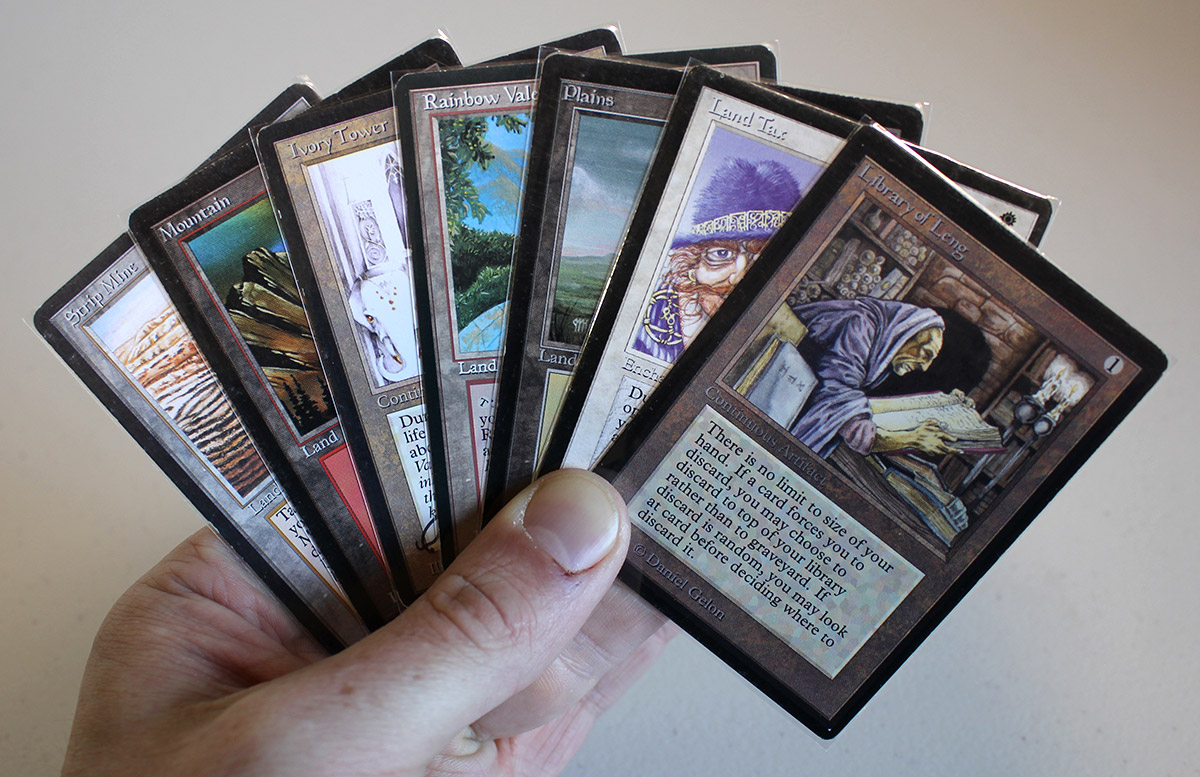
With Land Tax and multiple synergistic combo components already in hand, along with plenty of mana to operate, this is a nice hand that also includes a couple of tactics (Rainbow Vale and Strip Mine) that will help us activate Land Tax if the opponent slow walks their game. If on the play I’d lead with Ivory Tower, and if on the draw it’s probably better to lead with the Land Tax, and then follow up with Tower or Library of Leng on the next turn.
Opening Hand 9
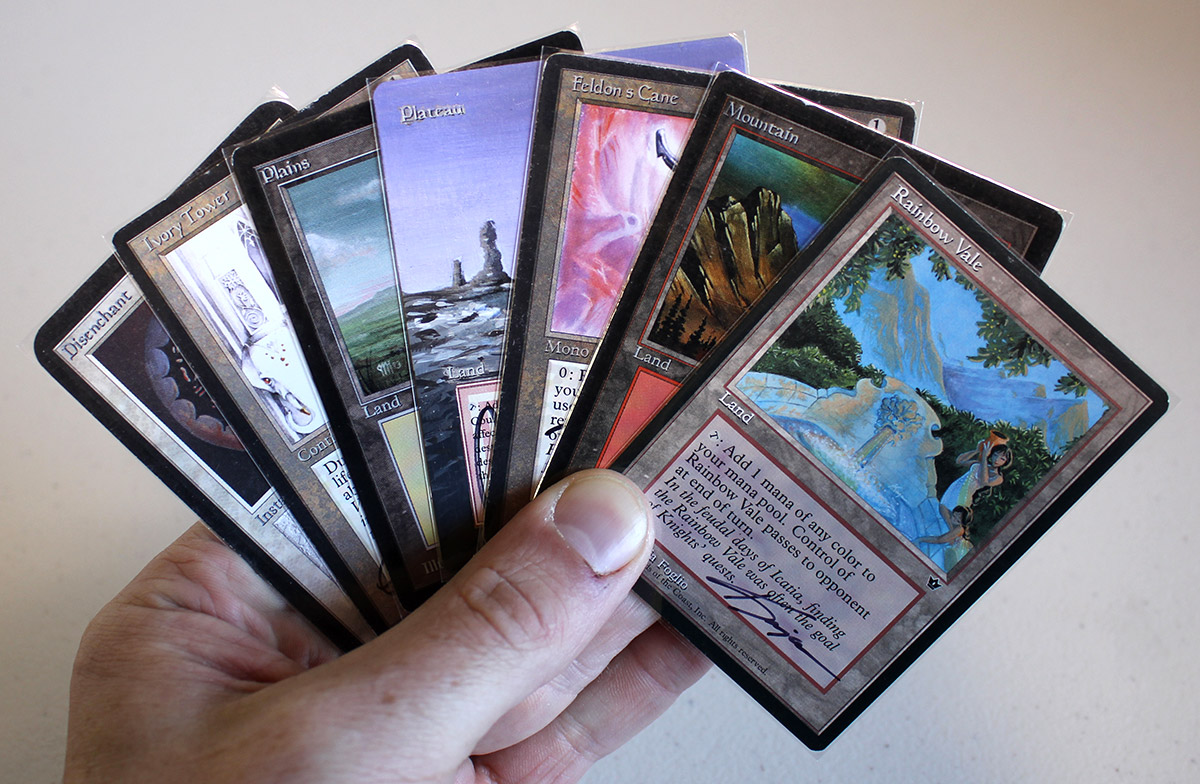
Plenty of mana, but not much to do with it other than sit behind an Ivory Tower. I’m going to flush this hand for more gas.

Lots of action, but not nearly enough mana to keep, as we can realistically cast Bolt or Library of Leng, and that’s it. Let’s hope for a better hand of five.
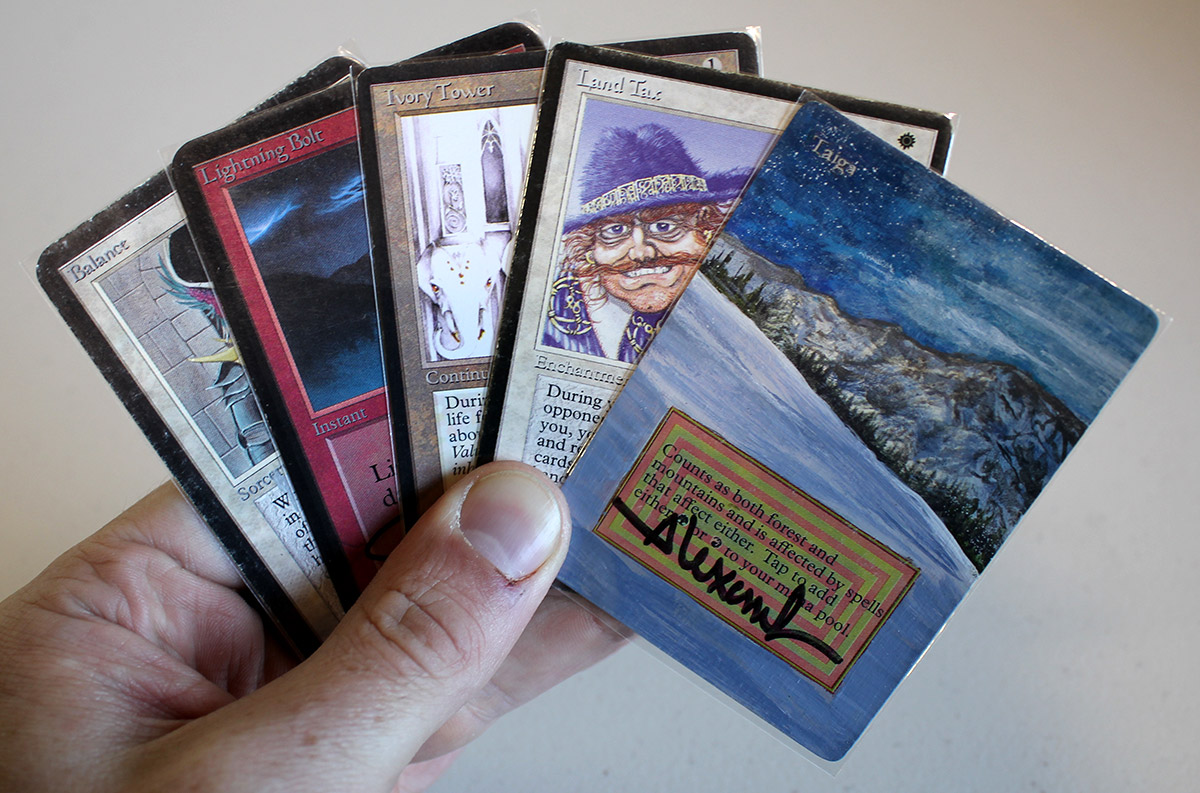
While this hand lacks white mana, it does have a Bolt for immediate removal, and if it draws in to white mana can cast both Balance and/or Land Tax to get right back in the game and reclaim some card parity. I think this is much better than mulliganing again, and gives us better odds of winning, so I’d keep this hand.
Opening Hand 10

To keep hands without Land Tax or part of the combo, you need a way to survive, or to draw in to the combo. This hand has enough mana, Ivory Tower, and plenty of varied removal, so I feel good enough keeping it that I’ll be able to survive the early to mid game to draw in to more gas and combo components.
Concluding Thoughts
The version presented above is a budget-minded build, eschewing expensive stuff like Power 9 cards and blue dual lands. As you find your own upgrade path through Old School 93-94 and slowly acquire more cards, they can certainly be added to make this deck more potent. Mox Pearl, Mox Ruby, and Library of Alexandria are all very welcome additions, and would replace a couple of the basic lands. More dual lands (or other color splashes) are always a consideration too, but you must always be mindful of having enough basic lands in your deck no matter what color combinations you choose, in order to fully leverage Land Tax. Powered, underpowered, or unpowered, this is a fun deck that attacks the Old School 93-94 metagame from a different axis, and rewards thoughtful decision making.
Stay tuned to Eternal Central for more sick 93-94 brews all month long. Thanks for reading.

